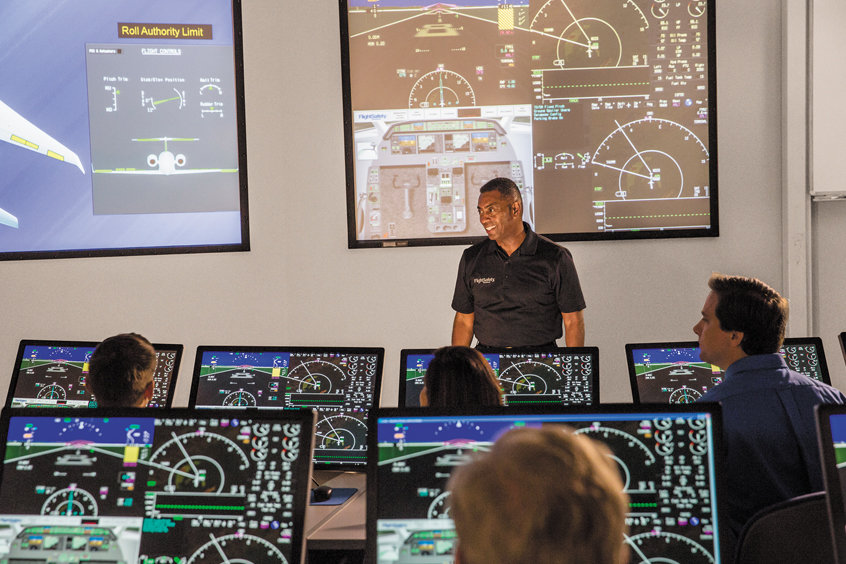Why visit ACE ’25?



Training for the Gulfstream G500 aircraft is now underway at FlightSafety's Savannah Learning Center. Executive vice president David Davenport says: “We have worked closely with Gulfstream to develop and deliver a comprehensive, technologically advanced training programme designed specifically to meet the needs of Gulfstream G500 operators.”
The simulators feature the new CrewView collimated glass mirror displays while training enhancements include a whole-Earth environment and worldwide database that incorporates latest terrain information with satellite imagery. The FAA Level 4 flight training devices also feature a visual system, HUD/EVS and pilot sidestick.
While the length of initial training is similar to other programmes, the footprint of the course has changed significantly. Pilots can expect 46 hours of classroom instruction, 18 hours of systems integration, eight hours in the flight training devices and 24 hours of simulator time prior to the check ride. This is a reduction in classroom time and an increase in SIT and scenario-based training.
The Georgia facility is also now offering advanced upset prevention and recovery training for the Gulfstream GIV aircraft thanks to the installation of the new FlightSafety VITAL 1100 Visual System. Executive director, advanced training programmes Dann Runik explains: “FlightSafety's advanced upset prevention and recovery training presents compelling scenarios that allow pilots to safely experience and recover from historically accurate, in-flight upset events in a way that would be far too dangerous to experience in an actual aircraft.”
During the course pilots are able to recognise, experience and recover from in-flight loss of control in the safe and controlled environment of a simulator. The course also helps increase knowledge of aerodynamics and develops new skills that are critical to safe operations.
The academic portion of this course consists of four hours of advanced topics including low/high speed aerodynamics, stability and control, aircraft performance and upset recovery technique. The simulator portion of the course consists of allowing pilots to recognise, experience and recover from full aerodynamic stall and speeds in excess of VMO/MMO.
With the addition of UPRT to the Gulfstream GIV programme, pilots now have access to all four advanced courses offered in the FlightSafety Master Aviator programme. They include Advanced Upset Prevention and Recovery, Advanced Energy Management, Advanced Rejected Takeoff Go/No-Go and Advanced CRM/Human Factors LOFT.
Meanwhile, FlightSafety has become the first company to provide Enhanced Flight Vision Systems (EFVS) to Touchdown and Rollout training for the Gulfstream G500 and other Gulfstream aircraft equipped with the Rockwell Collins HUD II and Kollsman (Elbit) EVS-II and EVS-SP.
The stand-alone course is offered on Gulfstream aircraft that have achieved EFVS to Touchdown and Rollout certification and meets training requirements established by the FAA for operators who use EFVS in lieu of natural vision to descend below the decision height/altitude or minimum descent altitude.
Certification is accompanied by an additional approval that enables appropriately authorised Part 135 and Part 91 operators to dispatch and begin instrument approaches when visibilities are lower than the published approach minimums using the Visual Advantage concept.